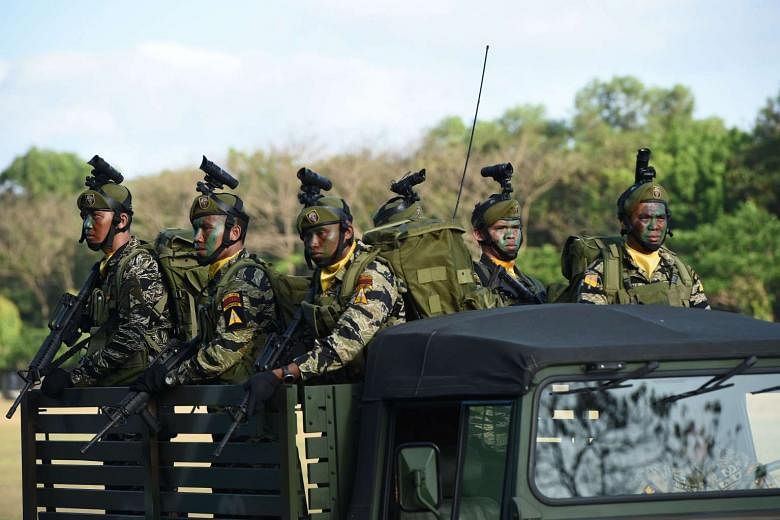MANILA - Philippine troops have killed another senior leader of the notorious Abu Sayyaf group responsible for kidnapping Malaysians and Indonesians in waters off Sabah state, including an engineer beheaded in 2015.
Lieutenant-General Carlito Galvez of the Western Mindanao Command said on Saturday (April 29) that Alhabsy Misaya was killed in the Abu Sayyaf's stronghold province of Sulu, some 950km south of the capital Manila.
He did not provide any other details.
Misaya's group was behind the abduction in May 2015 of Malaysians Thien Nyuk Fun, 50, manager of the Ocean King Seafood Restaurant, and Bernard Then, 39-year-old engineer, in Sandakan town, Sabah.
Ms Thien was released in November after her family paid some 30 million pesos (S$900,000) in ransom.
Mr Then, however, was beheaded more than a week later, purportedly because the ransom offered was not enough.
Misaya and two other Abu Sayyaf leaders were also allegedly behind the abduction of Ms Gao Huayun, a Chinese citizen, and a Filipino resort worker Marcy Dayawan, in April 2014.
Ms Gao and Ms Dayawan were taken from the Singamata Adventures and Reef Resort in Semporna town. They were released two months later, after Ms Gao's family reportedly paid a ransom of about 300 million pesos.
Last year, Misaya's group seized 10 Indonesian and five Malaysian tugboat crewmen. All have already been released, after payment of ransom.
Misaya's death comes just weeks after Philippine security forces killed Abu Sayyaf spokesman Muamar Askali, alias Abu Rami, described as a "rising star" in Islamic extremist circles and tagged behind several high-profile kidnappings, in clashes at a popular island resort in central Philippines.
Askali was leading a band of militants that sailed northward for nearly 800km from an Abu Sayyaf base in Indanan town, in Sulu province, to Bohol, to abduct tourists there.
Nearly all militants with him have already been tracked down and killed, including the Abu Sayyaf's pointman in central Philippines, Joselito Milloria.
The Abu Sayyaf was formed by disgruntled Moro Islamic fighters in 1991, with Al-Qaeda funding. However, it did not gain prominence till May 2000, when it attacked a dive resort in Sipadan, Malaysia, taking 21 hostages.
The military said the Abu Sayyaf is still holding at least 24 more hostages - 13 Vietnamese, seven Filipinos, a Dutch, a Japanese, and two Indonesians.
The Abu Sayyaf has capitalised on decades of instability in southern Philippines and generated tens of millions of dollars from piracy and ransom payments.
It uses the money to buy arms, high-powered boats and modern navigation equipment, allowing it to avoid detection and seize crew of slow-moving vessels with ease.
Last month, the terrorist group beheaded Mr Jurgen Kantner, an elderly German sailor, after a deadline for a US$600,000 (S$840,000) ransom passed.


